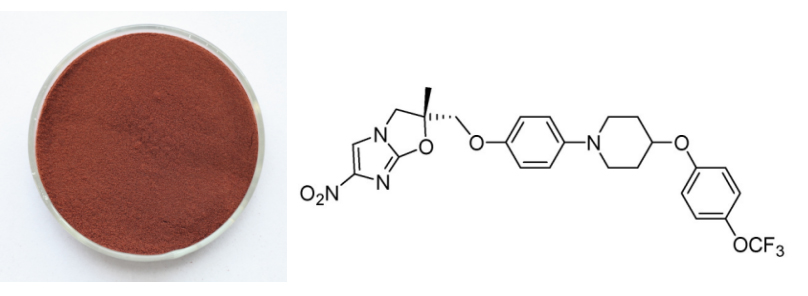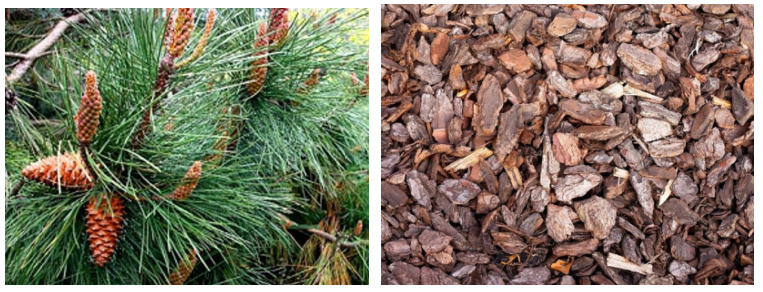14 Years Manufacturer Pine bark Extract Factory for Leicester
14 Years Manufacturer Pine bark Extract Factory for Leicester Detail:
[Latin Name] Pinus pinaster.
[Specification] OPC ≥ 95%
[Appearance] Red brown fine powder
Plant Part Used: Bark
[Particle size] 80Mesh
[Loss on drying] ≤5.0%
[Heavy Metal] ≤10PPM
[Storage] Store in cool & dry area, keep away from the direct light and heat.
[Shelf life] 24 Months
[Package] Packed in paper-drums and two plastic-bags inside.
[Net weight] 25kgs/drum
[What is Pine bark?]
Pine bark, botanical name Pinus pinaster, is a maritime pine native to southwest France that also grows in countries along the western Mediterranean. Pine bark contains a number of beneficial compounds that are extracted from the bark in a way that doesn’t destroy or damage the tree.
[How does it work?]
What gives pine bark extract its notoriety as a powerful ingredient and super antioxidant is that it’s loaded with oligomeric proanthocyanidin compounds, OPCs for short. The same ingredient can be found in grape seeds, the skin of peanuts and witch hazel bark. But what makes this miracle ingredient so amazing?
While OPCs found in this extract are mostly known for their antioxidant-producing benefits, these amazing compounds exude antibacterial, antiviral, anticarcinogenic, anti-aging, anti-inflammatory and anti-allergic properties. Pine bark extract can help reduce muscle soreness and may help improve conditions relating to poor circulation, high blood pressure, osteoarthritis, diabetes, ADHD, female reproductive issues, skin, erectile dysfunction, eye disease and sports stamina.
Seems like it must be pretty amazing, but let’s look closer. The list goes on a bit further, as the OPCs in this extract may “inhibit lipid peroxidation, platelet aggregation, capillary permeability and fragility, and to affect enzyme systems,” which basically means it may be a natural treatment for many serious health conditions, such as stroke and heart disease.
[Function]
- Lowers Glucose Levels, Improving Diabetic Symptoms
- Helps Prevent Hearing Loss and Balance
- Staves Off Infections
- Protects the Skin from Ultraviolet Exposure
- Decreases Erectile Dysfunction
- Reduces Inflammation
- Helps Increase Athletic Performance
Product detail pictures:

Related Product Guide:
Our focus on should be to consolidate and enhance the quality and repair of present products, in the meantime constantly establish new products to meet unique customers' requires for 14 Years Manufacturer Pine bark Extract Factory for Leicester , The product will supply to all over the world, such as: Sudan, Haiti, Guinea, It is our customers' satisfaction over our products and services that always inspires us to do better in this business. We build mutually beneficial relationship with our clients by giving them large selection of premium car parts at marked down prices. We offer wholesale prices on all our quality parts so you are guaranteed greater savings.
Expand your vocabulary and learn how to say new words:
https://www.dictionaryvoice.com/How_To_Pronounce_Proanthocyanidins.html
Please leave a Like, a Comment, and Share.
Bookmark us and share:
https://www.dictionaryvoice.com
Twitter:
https://twitter.com/DictionaryVoice
Facebook:
https://www.facebook.com/pages/Dictionary-Voice/750369141710497
More Pronunciations:
1) How to Pronounce Proanthocyanidins
https://www.dictionaryvoice.com/How_To_Pronounce_Proanthocyanidins.html
HOW TO REPLACE TEMPERED GLASS USING ZIZO PROTON SERIES MILITARY GRADE LG V20 CASE
The company comply with the contract strict, a very reputable manufacturers, worthy a long-term cooperation.







